
GNED 117
HISTORY OF TECHNOLOGY
Prof. Tim Richardson
Toronto, Canada

GNED 117 HISTORY OF TECHNOLOGY |
Prof. Tim Richardson Toronto, Canada |
Detailed Course Outline
The Medieval Science Page
http://members.aol.com/McNelis/medsci_index.html
| Medieval
Times !  |
Children of Prometheus
Chpt 5 heritage of iron use left by the Romans irons could makes better tools better axes could cut down more trees more cleared land led to more agriculture more agriculture led to more food and a population increase
Although sometimes the period
in European history, between the fall of the Roman Empire and the rise
of the Renaissance in the 14th century is sometimes referred to as the
Dark Ages (mostly in reference to the Black Death in the 13th century)
there was in fact many advancements and developments in this period.
|
| Class 8 |
Medieval
|

Castles were part of Medieval history termed the Age of Feudalism. Feudalism refers to "... the military society which was created in Europe during the 9th and 10th centuries AD and which reached its most developed form in Normandy in the 11th century." + http://www.britannia.com/history/david2.html + http://www.britannia.com/history/david3.html "what is a castle?" The English Medieval castle, like its counterparts in Europe, is a unique phenomenon. Most buildings are created to fulfil a single, specific purpose: a church, a house, a factory, a school, a bank, a hotel etc. A castle, depending upon the status of the man who occupied it, could be variously, a military base, a seat of government, a court and a stronghold for the surrounding region. It could be any or all of the above but it was principally the private residence of itsowner, his family and his dependents. England had known fortifications before the advent of the castle. The Iron Age peoples of Ancient Britain fortified hilltops with massive earthworks The Romans dotted the countryside with innumerable military encampments and built the impressive chain of fortresses, known as the Saxon Shore forts (e.g. Portchester Castle, below), to guard South-East England from Saxon raiders in the 2nd and 3rd centuries AD. The Normans later built castles within the walls of two of these Roman Saxon Shore forts. Castles were the product of that period of Medieval history termed the Age of Feudalism. Feudalism is a term strictly applied to the military society which was created in Europe during the 9th and 10th centuries AD and which reached its most developed form in Normandy in the 11th century. David Dawson |
| "The Norman conquest of
England in 1066 introduced feudalism to England. We have already
seen that castles were a feature of feudalism so it follows that the Normans
introduced castles to England."
What is Feudalism? "At the top, is the king
who, in theory at least, owned all the land in his kingdom. Immediately
below the king was a group of major landholders who held their land
directly from him, his tenants-in-chief. These were the great lords
and magnates of the kingdom. [Dukes, Earls and Barons] In return
for their land, they swore to give the king military service; that is,
they and their retainers would fight for the king whenever and whereever
he chose. The tenants-in-chief let out land to their tenants, the lesser
barons and lords, on the same terms. This process was repeated all
the way down the pyramid to the knight who was the local lord of the manor.
The amount of land a man held was directly proportional to the amount
of military service he could render."
|
| Medieval
Weights and Measures |
"Medieval Europe inherited
the Roman [measurement] system, with its Greek, Babylonian, and Egyptian
roots. It soon proliferated through daily use and language variations
into a great number of national and regional variants, with elements
borrowed from Scandinavia and from the Arabs and original contributions
growing out of the needs of medieval commerce."
http://britannica.com/bcom/eb/article/6/0,5716,114986+7,00.html "The basic Roman unit of
weight, the libra, acquired a Germanic name in parts of northern
Europe but retained its Roman identity in the English abbreviation of pound
as lb. Similarly the
Medieval liquid measure was generally based on the pinte, or pint, which was approximately equal to the modern English quart; the quart was a medieval unit of dry measure, very close to its modern English equivalent in volume." |
| Class 8 | 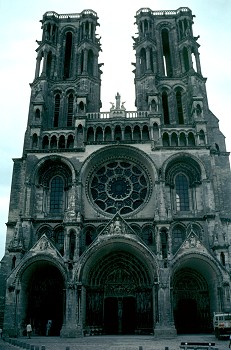
Medieval Structures Gothic
|
Children of Prometheus
page 58 "in the religious climate of medieval Europe, the building of large cathedrals became a way for towns to display their wealth..." Some of the more famous early cathedrals in France, Germany and England were built in the period 950 AD ~ 1250 AD Some of these buildings were 100 metres in length with interior spans of 12m and vaults rising as high as 30m above the floor One cathedral at Chartes
was 135m long with a span of 20m with a tower reaching 115m
Professor Oliver Hansen from Westminister College "The Christian and Islamic
religions are different and yet similar as the architecture divulges...With
the fall of the Roman Empire in the fifth century it brought about a new
age that modern historians have termed the "Dark
|
| In class March 21, videos
will be shown about Gothic Catherdrals
One video, titled "Cathedral" is based on the well known book Cathedral by David Macaulay In the Middle Ages, religious faith in Europe was the dominating motivation behind everything. The cathedral was meant o be a physical representation of the divine order of things.
Masons
|
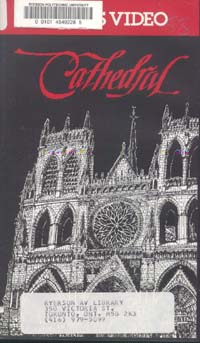 |
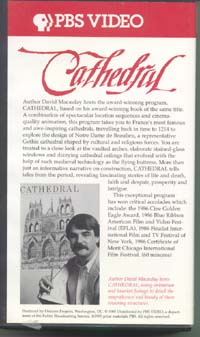 |
The Video - Cathedral
Uses live-action sequences and animation to portray the construction, beginning in 1214 and extending over many years, of Notre-Dame de Beaulieu, a fictional but historically accurate Gothic cathedral shaped by cultural and religious forces. Begins with visits to actual cathedrals, including Chartres, Reims, Notre-Dame de Paris, Amiens, and the Royal Abbey Church of Saint Denis where the Gothic style originated. Focuses on architectural features such as flying buttresses and stained-glass windows, and the medieval technology which made them possible. Describes the Gothic cathedral as a symbol of prosperity and civic pride as well as the administrative center for spiritual and educational growth. Based on David Macaulay's book of the same name. Hosted by Macaulay and Caroline Berg. |
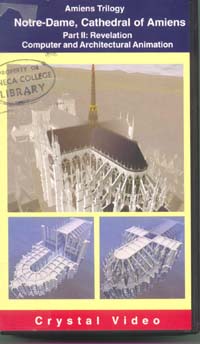 |
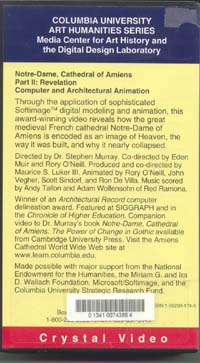 |
This other video shown in
class March 21 comes from
Columbia University Media Center for Art History and the Digital Design Lab This video shows the
|
some thumbnailed pics of the interior of the cathedral 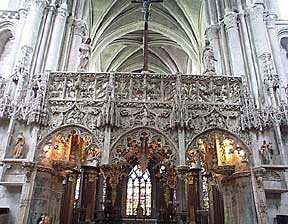 .
.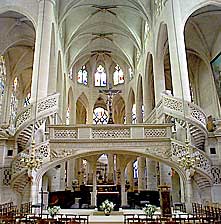 |
| Class 8
Class 8 |
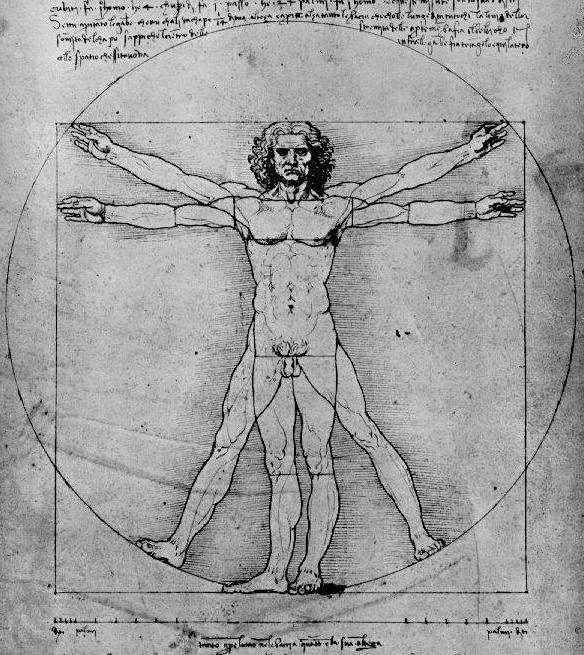
Renaissance period |
The period from the mid
14th century to the beginning of the 17th century was the Age of the Renaissance
- which was named such in reference to the "re-birth" of interest in classical
Greek and Roman technology and architecture, implements, art and lifestyles.
This was also the period for the first long ocean voyages of discovery
and led to a greatly expanded view of the world.
It was during the Renaissance that the first voyages to North and South America were undertaken and the results had a great effect on European people. At the same time, the Renaissance say the collapse of the great city states and the rise of larger regions which were the forerunners of today's European countries based on national monarchies. The widespread use of gunpowder
and cannons led to almost constant warfare as these early monarchies fought
with each other over border disputes and access to good agricultural land
and forests.
"The major influence of the Renaissance on technology was on architecture." A. Rupert Hall p. 81 Technology in Western Civilization, Volume 1 Kranzberg and Pursell During the Renaissance, many
artists and masons, in working on the large religious building projects
in England, Spain, France and Germany, made efforts to copy the designs
and features of the most famous structures of ancient Italy and Greece.
Use of gunpowder to propel projectiles - changes warfare technology - improved iron technology influences of inventions such as printing presses - first mechanical presses in 1450 A.D. navigation devices, compasses - opens up long distance land and sea trade routes When people think of famous people who represent the Renaissance period, perhaps the most famous "Ambassador" of this time in world history is Leonardo Da Vinci 1452 ~ 1519 "Leonardo da Vinci, born
in 1452 near Vinci, Italy, was perhaps the greatest innovative thinker
in history. A true renaissance man, da Vinci's talents spanned many disciplines,
including art, science, warfare, anatomy, and architecture."

- a detailed personal bio
of Da Vinci at
|
| Class 9 | Scientific Revolution
Scientific Revolution |
The Scientific Revolution
saw a number of developments which meant a lot in terms of human advancement
later; but during this historical period itself, most science was investigated
and developed without a parallel application (technology)
PowerPoint
presentation, on-line about the Scientific Revolution.
The fundamentals
of the Scientific Method
Copernicus 1473 -
1543, new model of the universe
Francis
Bacon 1561 - 1626
Galileo 1564 - 1642,
Rene
Descartes 1596
- 1650
Otto von Guericke
|
||||||
| Class 9 | Scientific Revolution
Scientific Revolution |
Sir
Issac Newton 1642 - 1727
- astronomy of Copernicus - physics of Gallileo - studied mathematics and physics - law of gravity and 3 laws of motion Newton's bio at
Newton also responsible for
many principles of physics being discovered
|
||||||
| Class
10 |
QUIZ. | Quiz in the first 15 minutes of the class, worth 5 % |
| Class 11 | Industrial
Revolution Industrial
Industrial
Industrial
|
During this period, mechanical inventions transformed society from farmers and craftsmen to manufacturing on a large scale. The Industrial Revolution was made possible by significant developments in agricultural technology which increased the population and created an urban non-farming population. This urban population had many new demands for food and clothing which needed to be met by increasing the efficiency of producing food and clothing. Developments in agricultural technology needed to feed fast growing population of Europe - and because the better farming methods could feed more people, more parents were encouraged to have more children p. 153 Children of Prometheus
In England, many of the forests had already been cut down and most land cleared for agriculture so they could not increase agricultural product by increasing the land area, therefore what they had to do was increase the production on the existing land by using better farming methods and using more advanced machinery for tilling, planting and harvesting Farms became more productive
through
Agricultural reorganization Part of the improvements came about based on technology, part of the improvements also came about due to better organization. In 1709 an act of Parliament was passed in England which resulted in tenant farmers being turned into farm labourers. The aristocracy assumed total control of the land and as a result they were able to make changes to crop rotation and selection of crops to be planted. Root crops were added to the traditional grains. This assisted crop rotation because the soil requirements for potatoes, beets and turnips were different than wheat and barley. Additionally, horses replaced oxen and they developed breeding programs to result in larger horses which could pull heavier plows for a greater length of time. from Children of Prometheus page 154-155 - water
wheels
|
| Class
11 |
Industrial Revolution
Industrial Revolution
Industrial Revolution |
Introduction to the Industrial Revolution "The Industrial Revolution started in England around 1733 with the first cotton mill" Point of interest - "As new
inventions were being created, factories followed soon thereafter. England
wanted to keep its industrialization a secret, so they
The Factory System "New kinds of machinery and
the application of steam energy to running the machinery helped create
the factory system. New machinery also meant the standardization
of products. The Industrial revolution began in the British textiles'
industry. The Industrial Revolution had its beginnings in Britain
because the English merchants were leaders in developing a
commerce that increased the demand for more goods."
Very
young children were forced to work in the factories - the main reason children
In addition to bad treatment,
children also suffered a very high number of accidents from machines that
often broke down and had no safety guards
|
| The Industrial Revolution
http://history1700s.about.com/homework/history1700s/library/weekly/aa090697.htm?once=true& Overview The Industrial Revolution changed manufacturing by changing the way people worked. For one thing, it brought work out of the home and centralized it in the factory. Inventions Necessity is the mother of invention; therefore, it was necessity that brought about the revolution, especially in manufacturing. The use of machines enabled goods to be produced in more quantities and cheaper for both producer and consumer. Before the introduction of machines and the factory setting, hand manufactured goods, in single homes or cottages, where the owner worked side by side with his employees was normal. This changed with the introduction of machines and mass production. The Industrial Revolution lead to several other revolutions as technology became more sophisticated. The Transportation Revolution, Communications Revolution and the Information Revolution all can trace their roots in the Industrial Revolution. |
| Class 11
Class 11
Class 11 |
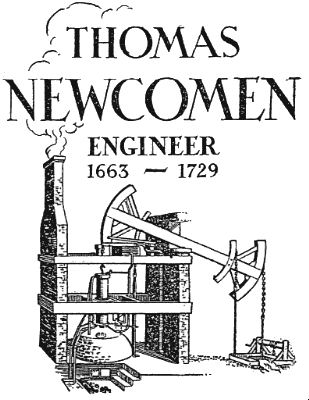
Industrial Revolution 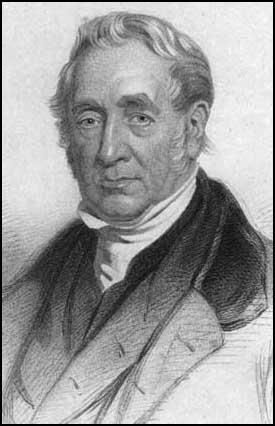 |
Steam
Power
"The steam engine can, with justification, be claimed as the most important single invention of the Industrial Revolution. It enabled mines to be drained to greater depths than were hitherto economically possible and so helped provide the coal, iron and other metals that were vital to the expansion of industry." Thomas Savery 1650-1716, steam pump Savery, a military engineer, introduced his steam-operated pump in 1698. The problem faced by his invention was that the design was not very safe to use in coal mines for pumping water because the fire which heated the boiler, to make the steam (in Savery's design) had to be very close to the water being pumped. This meant that sometimes the fire heating the boiler could cause the coal dust to explode, causing the mine to cave in. Savery's design however was suitable for use in pumping water for systems above ground. p.
158 from Children of Prometheus
Thomas Newcomen 1663-1729, Steam Engine "Newcomen built an engine with a piston working in a vertical cylinder and a massive overhead rocking beam connected to the mine pumps. In 1712 the first practical steam engine in the world was set to work at a South Stafforshire colliery and within a few years they were being built in almost every mining area of Britain. Their use quickly spread to many countries in Europe and Scandinavia and they were soon employed for water supply purposes."
"Thomas Newcomen has been overshadowed by the better known scotsman James Watt, who is still, incorrectly, known as the "inventor" of the steam engine beginning in 1765. In the late eighteenth century numerous Newcomen engines were used to power factories for those who could not pay the very high charges for Watt's more advanced engines. The number of Newcomen engines built were in thousands, compared with hundreds for Watt's engines, and remained in operation for much of the 19th century." The advantage to Newcomen's
steam engine was that it could be installed at the top of the mine shaft,
away from the coal dust, with no risk to fire in the boiler sparking the
coal dust in the drifts.
James Watts 1736-1819, Watt's Steam Engine Watt's
improvement was based on his recognition that there was significant heat
loss as the cylinder alternately cooled and heated in each cycle.
How did James Watt's made improvements to the design of Thomas Newcomen's steam engine. Essentially, Watt produced a steam engine that cooled the used steam in a condenser separate from the main cylinder. Watt continued to improve his steam engine, adapting it to run many different kinds of machinery. As a result of his work, steam eventually powered much of the growing industrial revolution. Bio of James Watt at
"Watt calculated that a horse exerted a pull of 180 lb., therefore, when he made a machine, he described its power in relation to a horse, i.e. "a 20 horse-power engine". Watt worked out how much each company saved by using his machine rather than a team of horses. The company then had to pay him one third of this figure every year, for the next twenty-five years. When James Watt died in 1800 he was a very wealthy man." |
| Class 11
Class
|
Industrial Revolution Locomotives
|
the origins of the first
locomotives
http://www.uh.edu/engines/epi109.htm George Stephenson
|
| Class
11 |
Industrial Revolution Locomotives
|
VIDEO to be shown in class
titled "The Golden Age of Steam: Locomotives". |
| Class 11
Class
|
Industrial Revolution |
Eli Whitney & The Cotton Gin The cotton gin, invented in 1793, (short for cotton engine) was a machine for getting seeds out of cotton. Where before the seeds had to be picked by hand, slaves used the machines to significantly increase production. wool
manufacturing vs. cotton processing and the power loom
The cotton industry in England
The Spartacus Internet Encyclopedia section on slavery in the context of the Industrial Revolution http://www.spartacus.schoolnet.co.uk/slavery.htm - slavery for large cotton plantations |